|
It wasn't far from the ice edge before the ice got farily compact and we were trying to push our way through. The ship was able to break through ice up to about 1 meter (3 feet) thick fairly easily, but when it got thicker than that it started to take a lot longer, requiring that we keep backing up and ramming the ice, breaking through just a little bit with each attempt. When the ice was like it was in the first photo it was no problem because the little floes would move around and easily open space for the ship. It was still loud and sometimes jarring when the ship hit these heavy pieces of ice with a speed of 5 to 10 knots. |
||
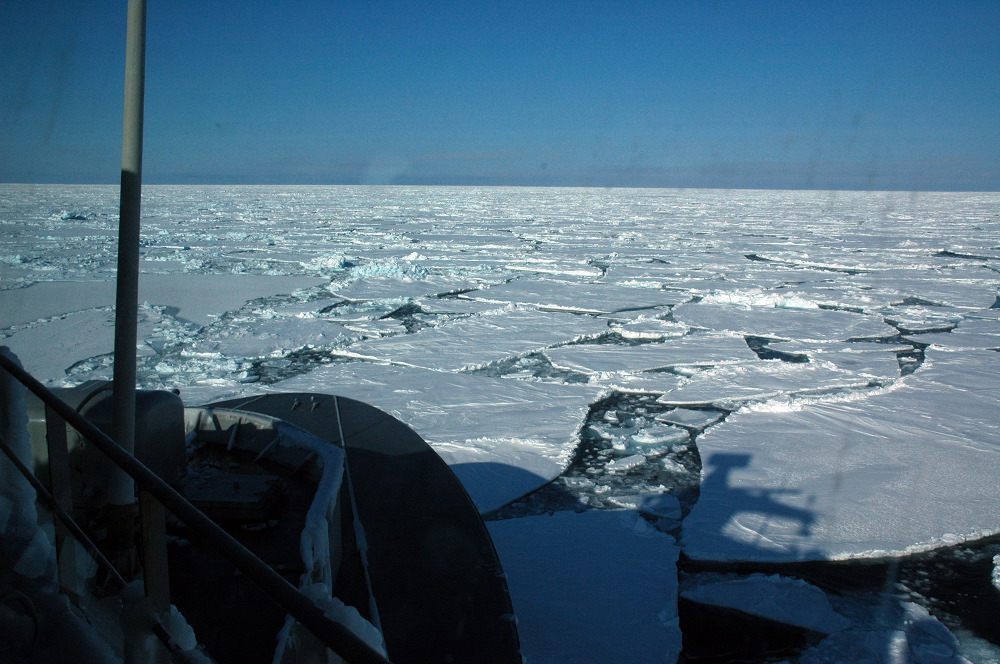 |
||
|
Things slowed down when the floes got larger, sometime many miles across. It often looked like the ship was trying to go through snow-covered land. |
||
 |
||
|
As the ship went past pieces of the ice they would often turn over, letting you see the snow on top of the sea ice. |
||
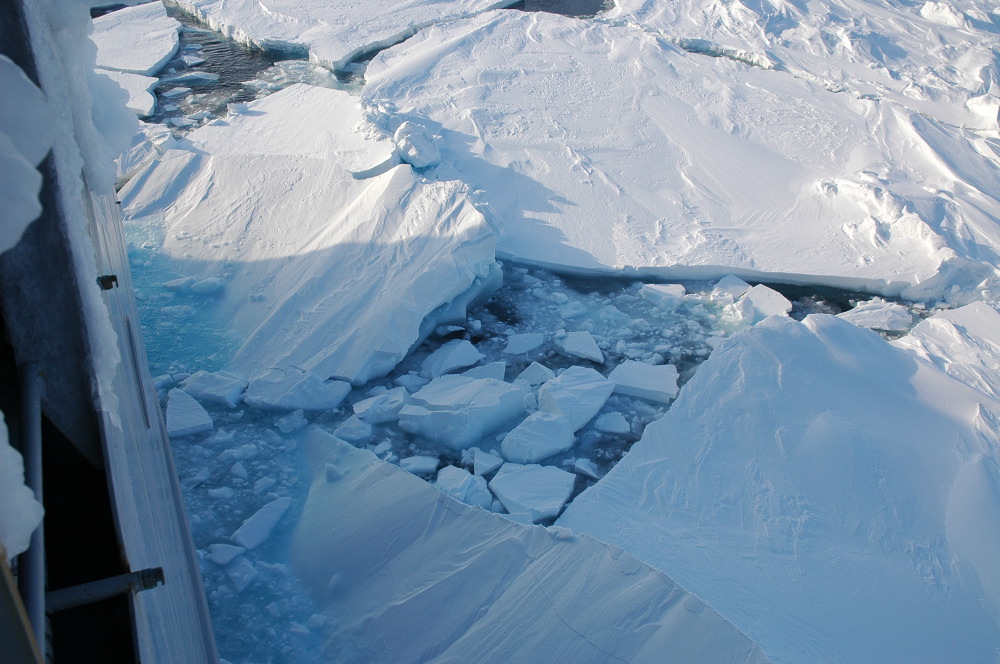 |
||
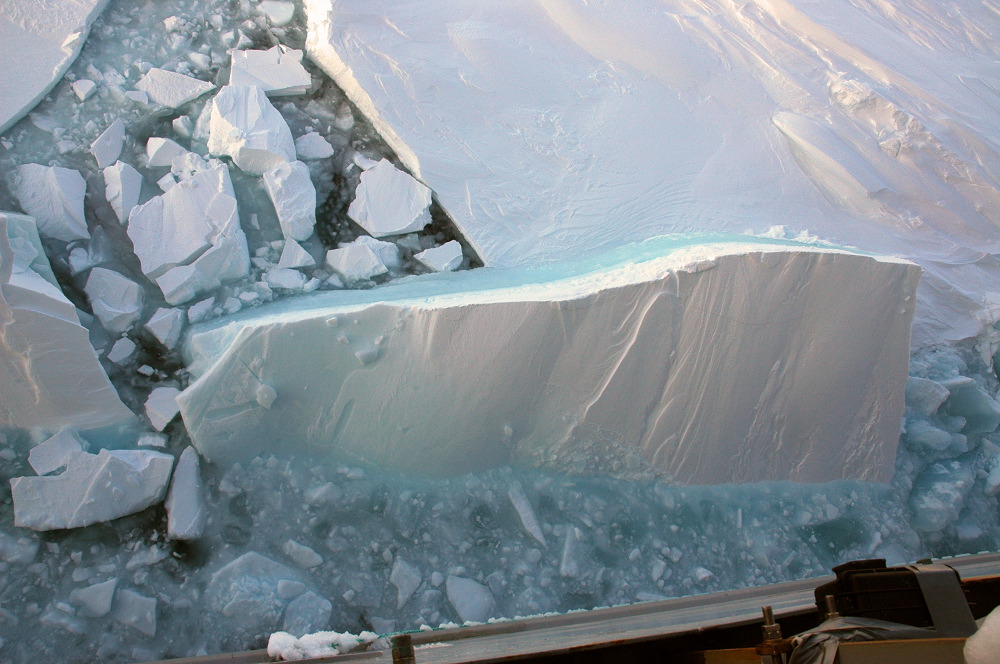 |
||
|
Here we have just backed up to take another run at the ice. You can see the broken ice where the ship was before, and a V mark in the snow where the bow stopped. Ice breakers break the ice by riding up on the ice and breaking through the ice with the weight of the ship. That's why the hull has to be rounded, allowing the ship to ride up on the ice. |
||
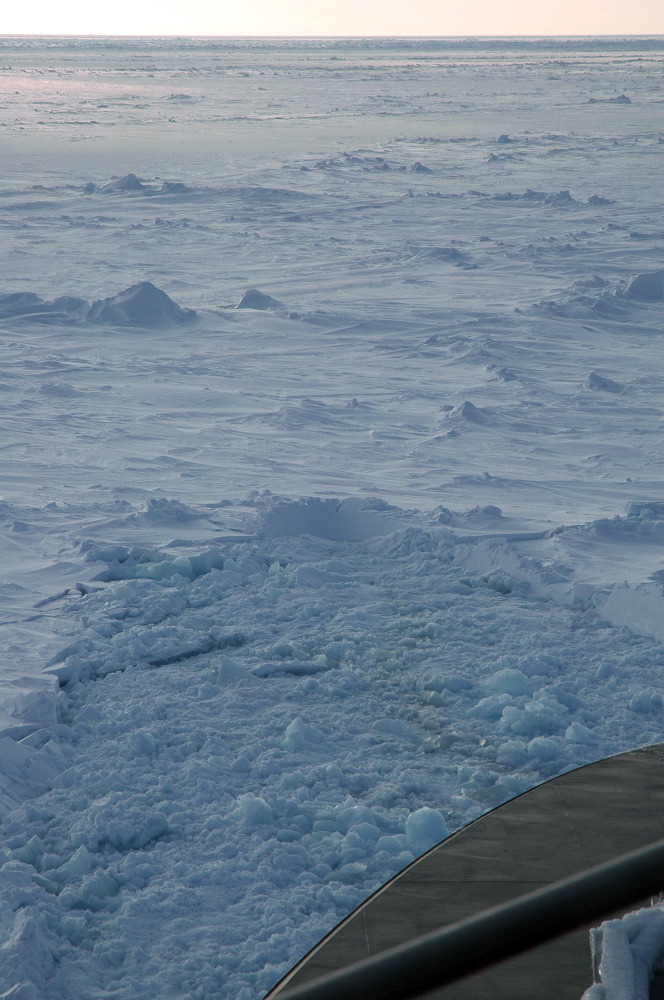 |
||
|
One day we were in the bow where the mooring ropes are, with the hatches that the ropes go through opened up while we were breaking thin ice. It provided an interesting view of the ice breaking. Here someone is looking out the hatch. |
||
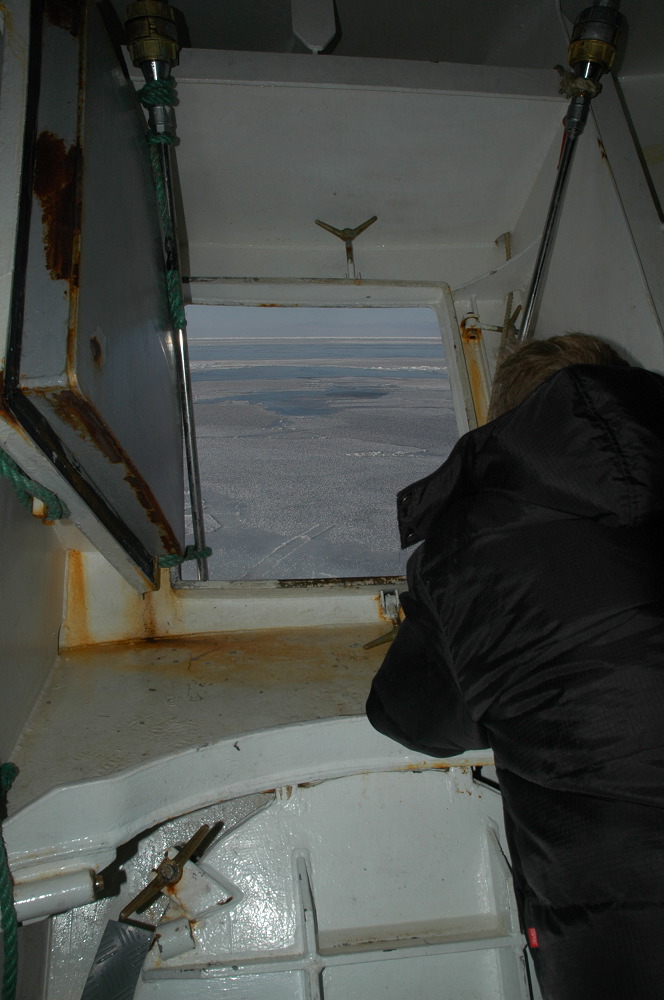 |
||
|
The view out of one of the hatches. The white spots on the thin ice in the photos are patches of frost that have formed on the new ice. |
||
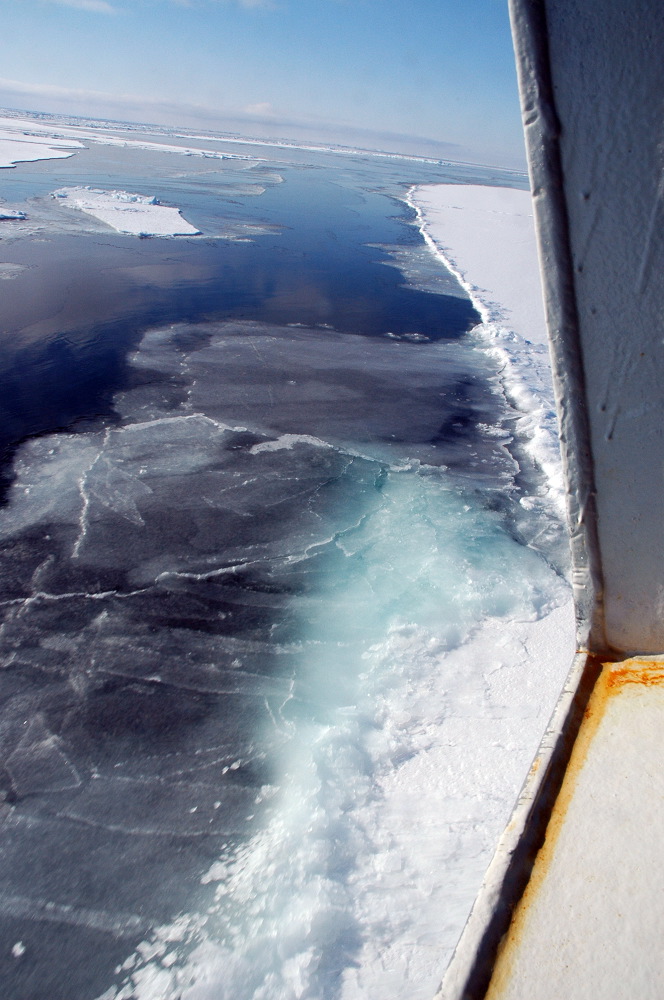 |
||
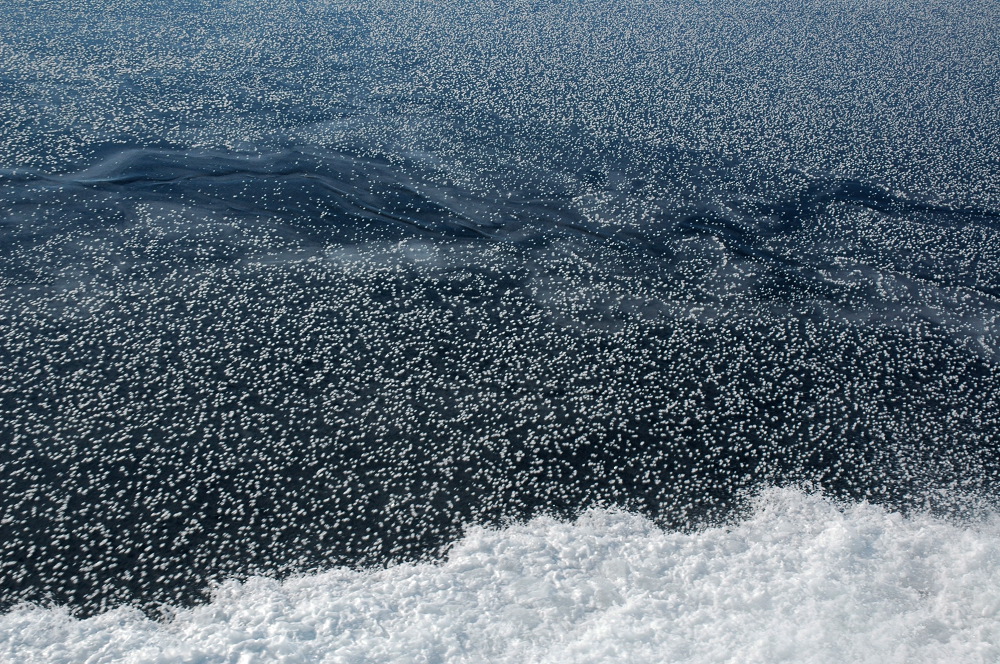 |
||
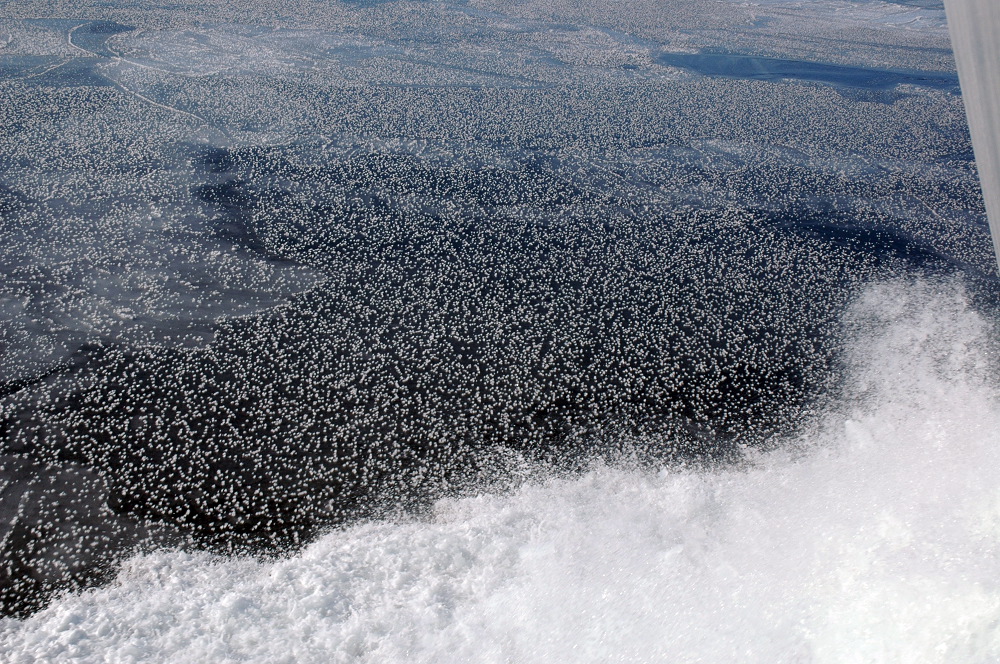 |
||
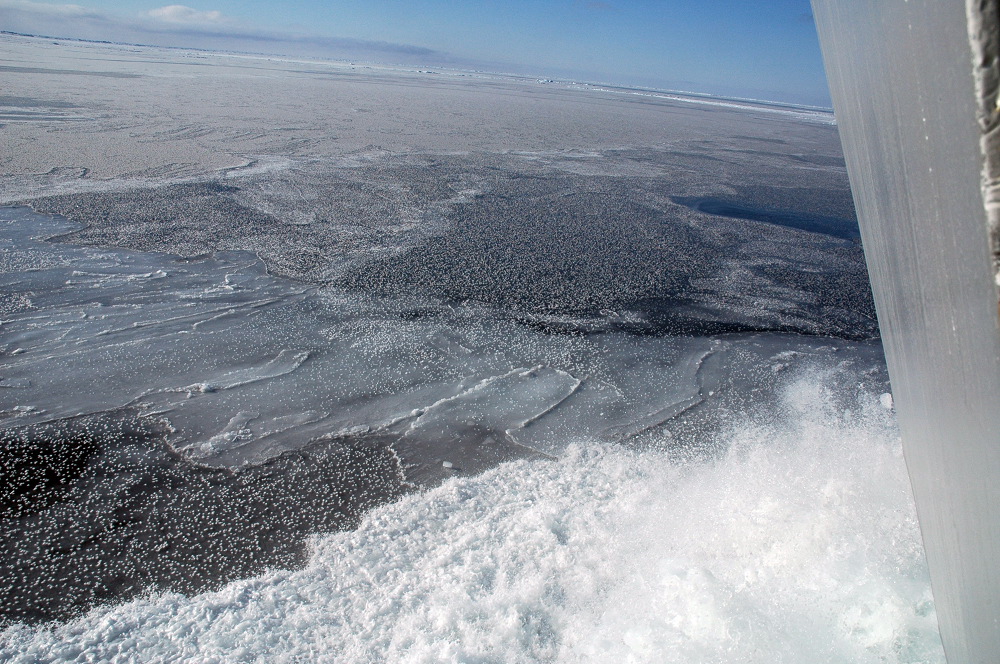 |
||
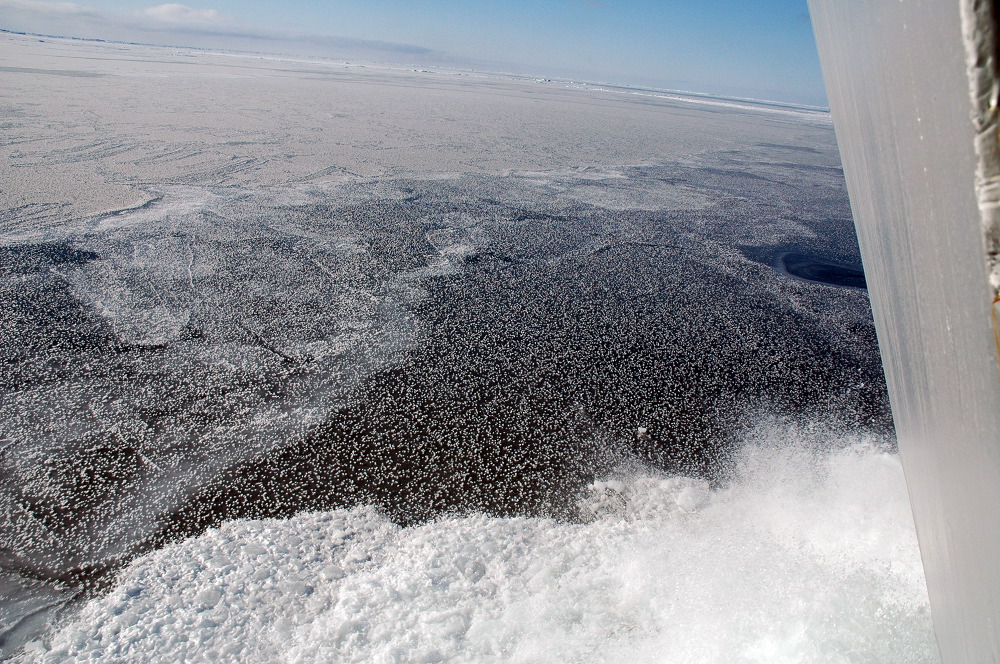 |
||
|
Looking behind the ship, you could always tell where you had been. |
||
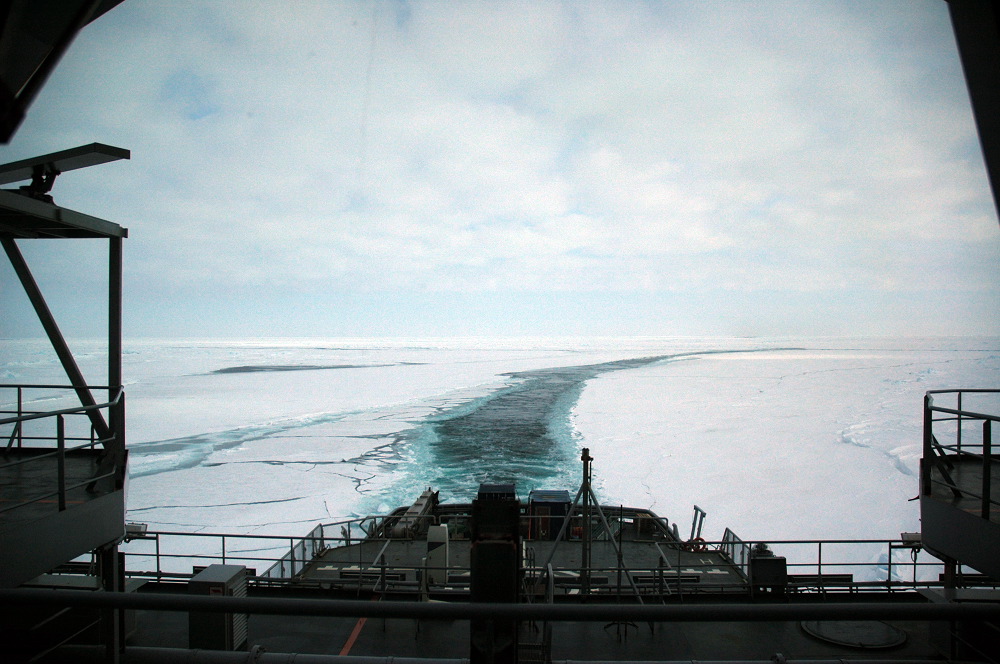 |
KV Svalbard page
Tromsų page
Main Photo Page
Return to Home
Page created 19 July 2008, Last updated 19 July 2008 16:37 CEST.